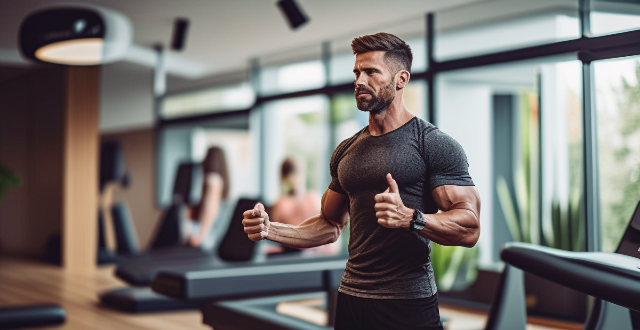Flexibility is crucial for overall health and well-being, improving range of motion, reducing muscle tension, enhancing posture, and boosting athletic performance. To improve flexibility, incorporate stretching exercises, yoga or Pilates classes, foam rolling, and massage therapy into your routine.

The Relationship Between Flexibility and Overall Health
Flexibility is an essential component of overall health and well-being. It refers to the ability of a joint or muscle to move through its full range of motion without pain or discomfort. In this article, we will explore the relationship between flexibility and overall health in detail.
Importance of Flexibility
1. Improved Range of Motion
Flexibility helps improve the range of motion in your joints and muscles, allowing you to move more freely and easily. This can lead to increased mobility and reduced risk of injury during physical activities.
2. Reduced Muscle Tension
Flexibility exercises can help reduce muscle tension and stiffness, which can contribute to chronic pain conditions such as back pain, neck pain, and shoulder pain. By stretching your muscles regularly, you can increase blood flow to these areas, promoting healing and reducing inflammation.
3. Better Posture
Good flexibility can help improve your posture by strengthening the muscles that support your spine. This can lead to reduced strain on your back and neck, reducing the risk of developing postural issues such as kyphosis (rounded shoulders) or lordosis (excessive curvature of the lower back).
4. Enhanced Athletic Performance
Flexibility is crucial for athletes, as it allows them to perform at their best by increasing their speed, power, and agility. A flexible body can also help prevent injuries during high-intensity activities like running, jumping, or lifting weights.
How to Improve Flexibility
1. Stretching Exercises
Regular stretching exercises are one of the most effective ways to improve flexibility. You can incorporate static stretches into your daily routine, holding each stretch for 15-30 seconds and repeating 2-3 times per session. Dynamic stretches, which involve moving your body through a full range of motion, are also beneficial before engaging in physical activities.
2. Yoga and Pilates
Yoga and Pilates are popular forms of exercise that focus on improving flexibility, strength, and balance. These practices involve various poses and movements that target different muscle groups, helping to increase your overall flexibility over time.
3. Foam Rolling
Foam rolling is a self-massage technique that involves using a foam roller to apply pressure to specific areas of your body. This can help release tight muscles and improve flexibility by increasing blood flow and reducing muscle tension.
4. Massage Therapy
Massage therapy is another effective way to improve flexibility by targeting tight muscles and releasing tension. Regular massage sessions can help reduce pain, improve circulation, and promote relaxation, all of which contribute to better flexibility over time.
Conclusion
In conclusion, flexibility plays a crucial role in overall health and well-being. By incorporating regular stretching exercises, yoga or Pilates classes, foam rolling, and massage therapy into your routine, you can improve your flexibility and enjoy the benefits of increased mobility, reduced pain, better posture, and enhanced athletic performance. Remember to listen to your body and consult with a healthcare professional before starting any new exercise program.